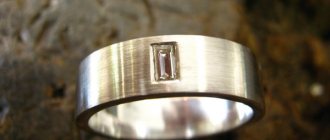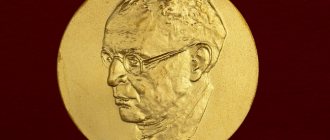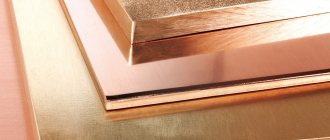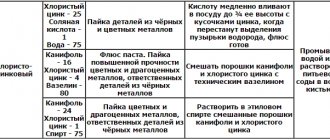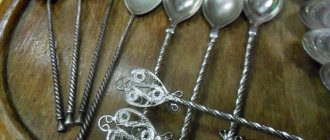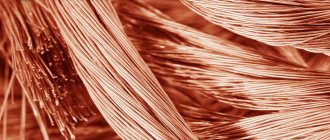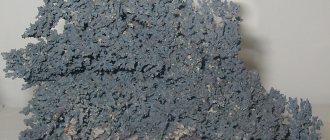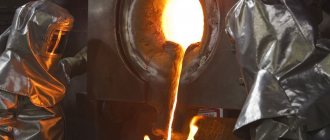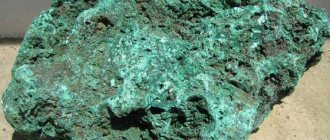The SPRINT3D company offers its customers metal casting - the production of various metal products obtained by pouring metal heated to a liquid state into a pre-prepared mold. The metal repeats it and preserves it, forming the product. This is a complex but effective way to produce original parts in a relatively short time and without large budget expenditures.
At the moment we are ready to provide you with:
- Bronze casting;
- Brass casting;
- Nickel silver casting;
- Nickel silver casting.
Metals and their alloys have different properties and require a specific approach to work. Therefore, in these matters, we recommend that you contact our specialists to get a high-quality result.
Where is metal casting used and what features of the process should you know?
Today, the most active products are those produced using lost-wax casting technology. Note that metal casting has found quite wide application in dentistry and the jewelry industry, which indicates the highest precision in manufacturing and quality.
Plus, we are ready to make original gifts, souvenirs, figurines, exclusive decorative elements, awards, decorative elements, souvenirs, bas-reliefs, etc. Production possibilities are limited only by the creativity and desires of customers.
As mentioned above, different metals can be used in casting. The main requirement for them is fluidity in the molten state. So bronze casting and brass casting are the priority. But not the only ones. Plus, you need to take into account the temperature at which a particular metal melts. The lower the melting temperature, the simpler and, accordingly, cheaper the whole process.
There are a lot of metals that can be used:
- Non-ferrous: brass, copper, bronze, aluminum or nickel alloys, etc.
- Precious: silver, gold, platinum.
The production of products by metal casting is carried out in stages and necessarily includes the following steps:
1. Formation of an idea. You can provide us with your own thoughts on what a particular product should be. Or just tell us what you need, and we will offer several original options.
2. Creation of a sketch and drawing. Our specialists visualize the idea to understand what the final result will be, as well as make the necessary adjustments, if any arise.
3. Printing a three-dimensional model on a 3D printer, creating a master model. This is a prototype of the product, which will later be replicated in the required number.
4. Development of molds and waxing. Stages immediately preceding casting. Allows you to obtain an accurate shape for further casting and prepare it for use.
5. Casting. Molten metal or alloy is poured into the mold, acquiring the desired shape and cooling.
6. Post-processing. The finished product can be further processed: electroplated with gold or silver, blackened or hand-chased. Our specialists are also ready to perform all this.
Metals (nickel silver, copper, brass) that I use to create jewelry. Information about them
Metals (nickel silver, copper, brass) that I use to create jewelry. Information about them. — Neusilbernikel silver
Nickel silver is a very interesting silver-colored alloy that I enjoy working with. Along with other metals, I often use it when creating jewelry.
Why do I use it? After all, many people want to see silver in their works, some even have a biased attitude towards this alloy, while others have not heard of nickel silver at all.
— First: The material is more affordable, which means the price of the jewelry is 40-60 percent cheaper. — Second: More resistant to damage (harder) and environmental influences compared to silver (darkens much more slowly). - Third: In appearance, no worse, in many cases indistinguishable from silver. Many craftsmen use it in their jewelry. From the description below you will understand why.
— Neusilber nikel silver The name “neusilber” is translated from German as “new silver.” Sometimes craftsmen, in order to avoid nickel in the name, write German silver. I don’t know how true this is, since such a designation is written when cupronickel is also used, which can completely confuse the buyer. Nickel silver - this alloy is very similar to silver, as well as white gold. Sometimes it can be distinguished from precious metals only by the absence of a sample. The history of nickel silver is closely connected with cupronickel – in China cupronickel was called “pakfong”. In the Middle Ages, the Chinese brought cupronickel products for sale to Europe. Trying to unravel the formula of cupronickel, Europeans alloyed copper, zinc and nickel in different proportions, but to no avail. Only at the end of the 18th century did scientists from Germany obtain an alloy similar to cupronickel, which they called nickel silver. Nickel silver is an alloy of copper with 5-35% nickel and 13-45% zinc. Due to the zinc content, the alloy is somewhat cheaper than nickel silver, which is similar in appearance and mechanical properties. It is characterized by corrosion resistance, increased strength and elasticity during deformation, and satisfactory ductility in hot and cold conditions. It has a silvery color, does not tarnish when exposed to air (or does so very slowly compared to silver), and upon contact with the skin a dark coating does not appear on it, which is why it is often used by jewelers. It is used in industry for the manufacture of parts for precision instruments, medical instruments, steam and water fittings, frets for guitars, as well as for the manufacture of state awards (orders and medals) and jewelry (nickel silver has recently been used more often, although “by inertia” such the alloys are usually called cupronickel - it was once widely used). Just like cupronickel, nickel silver is similar to silver, but even cheaper. Widely used in the manufacture of filigree and enamel. (Information taken from Wikipedia)
Frequently asked questions about nickel silver: - Does nickel silver darken? * Yes, it darkens over time, but much slower than silver or copper, depending on external conditions. — Does nickel silver jewelry leave dark marks when in contact with the skin, for example rings? * Since the composition contains copper, the metal, like other alloys with copper, is susceptible to oxidation, so dark marks are possible in places of contact with the skin during intensive wear, especially in the summer when the skin sweats, but this does not happen to everyone. This is more likely if the jewelry was covered with a patina for decorative purposes; the patina from contact with the skin can leave a mark on it. — They say you are allergic to this metal? For this reason, people are wary of nickel silver jewelry. * Yes, there are people for whom the nickel contained in the alloy causes an allergic reaction, but so far I have not met such people. Usually such people are allergic to other alloys including silver and even gold. If a person has an allergy, this is a sign of a health problem.
— I myself have had a nickel silver ring for a long time now and without any problems or any reactions from the body.
example of nickel silver earrings
—————————————————————————————————————————————————— —————— — Copper Copper (Cu from the Latin cuprum) is a golden-pink ductile metal, in air it quickly becomes covered with an oxide film, which gives it a characteristic intense yellowish-red hue. Thin films of copper have a greenish-blue color when exposed to light. It has been widely used by humans for a long time. The Latin name for copper Cuprum (ancient Aes cuprium, Aes cyprium) comes from the name of the island of Cyprus, where there was a rich deposit. Copper is one of the first metals well mastered by man due to its availability from ore and low melting point. This metal is found in nature in native form more often than gold, silver and iron. Some of the most ancient copper products, as well as slag - evidence of its smelting from ores - were found in Turkey, during excavations of the settlement of Çatalhöyük. The Copper Age, when copper objects became widespread, follows the Stone Age in world history. Copper jewelry has been known since ancient Egypt. Copper jewelry today can be found all over the world; many craftsmen love copper for its decorative properties, plasticity, and the ability to give it different shades with the help of patina. It is sometimes called a living metal; it is interesting to observe how copper changes its color over time, depending on the environment. The unusual shade of this metal, which can change over time, makes the jewelry especially attractive. Copper is pleasant to work with; it takes and holds various shapes very well. Almost all jewelry and accessories made of copper are made by hand, each product is unique and unique. Secondly, it is more affordable. There is also a lot of information about the healing properties of copper and its beneficial effects on the body.
example of a copper pendant
————————————————————————————————————————————————————————
— Brass Brass is a double or multi-component copper-based alloy, where the main alloying component is zinc, sometimes with the addition of tin (less than zinc, otherwise you will get traditional tin bronze), nickel, lead, manganese, iron and other elements. Brass contains from 55% to 95% copper and from 5% to 45% zinc. Plain brass is marked with the letter “L” and a number that indicates the percentage of copper. For example, the L85 alloy consists of 85% copper and 15% zinc. Copper has been known to people for several thousand years, but nickel was discovered only in the 16th century. But the enterprising ancient Romans learned to produce brass by alloying copper with zinc ore. They used it to make jewelry and elegant, thin-walled dishes. Typically brass is yellow in color, but additives color it gold, reddish, and greenish. The melting point of brass also depends on the composition and ranges from 900–950ºC. Brass can be polished, welded and rolled well, and is resistant to heat and corrosion. Brass resists exposure to the atmosphere better than pure copper, but can turn black if its surface is not varnished. Due to its wear resistance, brass is nicknamed the “eternal metal”. Brass jewelry: back in the 18th and 19th centuries, brass jewelry was sold under the guise of gold, and it was called “fake gold.” Today, costume jewelry and inexpensive jewelry are made from brass. Also, novice jewelers practice on brass grades L62 and L68 - their properties are similar to 583-carat gold. Due to its golden color, brass is very popular. Rings, earrings, pendants, bracelets, vintage and ethnic jewelry are made from brass. Brass is also blackened (artificially aged, covered with patina), silvered and plated with gold.
example of brass earrings —————————————————————————————————————————- More examples of jewelry where different metals are used together, complementing each other.
Cupronickel silver jewelry: what does the metal help with and what is its energy?
Nickel silver jewelry gives a person many useful bonuses. Experts will tell you what the energy of such jewelry is and how to use it correctly.
In its properties, cupronickel resembles silver, because it is often added to this alloy. Outwardly, cupronickel is also similar to this protective metal, but its strength is strikingly different. One of the most important properties of cupronickel is the cleansing of a person’s aura from negativity.
Energy and physical properties of cupronickel
It looks similar to silver and may contain this metal. Cupronickel also contains iron, nickel, copper, manganese, and zinc. The ratio of these ingredients in cupronickel is always different.
This is a very beautiful alloy, which is used both to create jewelry and to make dishes. It is believed that cupronickel tableware brings happiness and tranquility to the home. They say that such products calm people down and help them control themselves and not become negative during quarrels and conflict situations. It is noted that cupronickel helps to capture the so-called state of flow.
The energy of cupronickel is very energetic and stable. It attracts the power of Venus, which means it is a very powerful love talisman. Venus also gives energy to all living things, so cupronickel helps to overcome difficulties and increases the desire to move forward, no matter what.
Cupronickel goes well with talisman stones such as amethyst, moonstone, pearls, and white quartz. Cupronickel jewelry goes worse with fire verse stones: opal, carnelian, amber.
This is a very useful material for making jewelry, talismans and amulets. Its only drawback is that it turns black relatively quickly. It needs to be cleaned and maintained, but this does not require a lot of time, effort and money.
Who can wear cupronickel
Energy experts believe that this alloy is best suited for those who often make rash decisions in life. These are frivolous or imprudent people of such Signs as Aries, Gemini, Libra, and Pisces. Cupronickel is called the metal of wisdom, which helps people better understand themselves and find a path in life.
Cupronickel is suitable for everyone, just to varying degrees. It is useful to wear both in difficult times and in those moments when you need to increase productivity. Cupronickel silver has very weak protective properties, so in an aggressive environment it will be almost useless, unlike, say, silver. Yes, it helps you stay collected and calm, but it will not protect you from the evil eye and damage.
Nickel silver jewelry is not a purely financial talisman, although its effect on a person helps to increase productivity. It is versatile, so it can be worn on those days when it is not entirely clear what might happen. For example, if this is the first day at a new job or a day when you have to rearrange your routine, work in an unusual place, pace, or environment.
Cupronickel has a beneficial effect on people who are too tough and uncompromising, making them softer and more diplomatic. We are talking about representatives of such Zodiac Signs as Taurus, Leo, Sagittarius, Capricorn, Aquarius.
Cupronickel is useful for couples in love. Jewelry, accessories, dishes or souvenirs made of cupronickel help lovers quickly find compromises and solve problems. Cupronickel is believed to be a protective family talisman. It helps to form a deeper energetic connection with relatives.
The energy of gold is dangerous for some people, the energy of silver has a narrow range of applications, and cupronickel is a universal talisman that will never harm and will always be in place.
